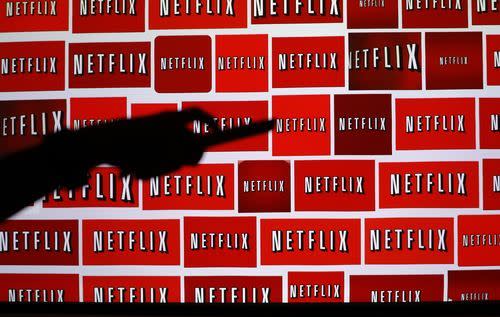Sorry, Cord-Cutters: Netflix Is Just Another Channel

“For the consumer it should just feel like another channel … a very unique channel, but a channel.”
—Ted Sarandos, Netflix Chief Content Officer
Netflix got its start as a sort of everything store for renting movies and television shows, which fueled hopes that it would do the same when it started streaming video over the Internet.
But Netflix has no such ambition. Instead of realizing the cord cutters’ dreams of providing any and every kind of content online for a single monthly fee, Netflix is increasingly becoming just another premium cable channel, albeit one without the same scheduling limitations of traditional offerings. It’s not trying to overthrow cable networks — it even wants to be included on them. And, meanwhile, rival HBO is making noise about offering a Netflix-style service of its own, further blurring the lines.
Chief Content Officer Ted Sarandos tried to explain it yet again this week in an on-stage interview at the MIPCOM conference in Cannes on Tuesday. Asked whether Netflix should still be thought of as a disruptive force in the entertainment business, Sarandos didn’t answer the question directly, but what he did say hardly sounded like the rebellious interloper of old.
“For the consumer it should just feel like another channel,” he said. “We are really programming for the world and programming for everyone in the house, which makes it a very unique channel, but a channel.”
Plenty of people are still confused about Netflix’s identity, though. When the company recently announced deals to show new movies on the Internet before or at the same time as in theaters, headlines screamed that Netflix was seeking to overthrow Hollywood’s decades-old release strategy.
But these one-offs, so far covering four future Adam Sandler films and the sequel to Crouching Tiger, Hidden Dragon, prove only how Netflix’s ambitions to be a disruptor of the entertainment business have shrunk. Asked if Netflix wanted to kill windowing, Hollywood’s strategy of parceling out releases months apart in theaters, on television and on the Internet, Sarandos was crystal clear.
“I don’t want to kill windowing — I want to restore choice and option,” he said. “The movie experience, seeing a movie in a dark room with a lot of people, is a completely differentiated experience from watching a movie on your couch. But you should be able to choose which way you want to see that movie,” he explained.
So why make these deals? To avoid giving customers the feeling that all the movies on Netflix are “old,” says Sarandos. That’s likely exactly the reason HBO has spent so much developing its own series.
But why not tap into the growing horde of cord-cutters and cord nevers — largely Millennials who have never paid for cable — by creating a comprehensive video library online? There is one major reason why Netflix can’t overthrow the system and give everyone what they want — it costs too much.
The company is already spending roughly $3 billion a year to license content and produce original shows and still can’t maintain a library of all the great movies it used to offer online. And while $3 billion may be a lot of money for a company with $5 billion in annual revenue, it pales in comparison to the total amounts at play.
The three big U.S. movie chains, AMC Entertainment, Regal Entertainment, and Cinemark Holdings, alone paid Hollywood the same amount last year for the rights to show first-run movies months before they reached Netflix viewers. And they account for only about half of U.S. movie ticket sales, meaning that other chains kicked in another $2 billion to $3 billion.
Time Warner’s HBO unit spends almost $2 billion on content per year. CBS, which owns Showtime and other cable channels along with its broadcast network, spent $3 billion last year for programming rights, plus another $2.5 billion on its in-house productions. Some of the CBS rights dollars went to major sports leagues, a niche that Netflix shuns, however.
And online, Amazon will spend an estimated $2.5 billion on movie rights and producing original shows, according to analysts at Bernstein Research, as it goes head to head bidding against Netflix for streaming rights.
Still, Netflix is growing faster than most of the rest of the industry. Netflix will report its third-quarter results after the market closes today, and analysts expect revenue reached $1.4 billion, up 27 percent from a year ago, according to FactSet. Total subscribers are expected to hit 55.9 million, according to FactSet, up 38 percent from 40.3 million a year ago, aided by a recent expansion into major European countries. Earnings per share are expected to be 92 cents.
Analysts also expect growth to continue, with revenue reaching almost $7 billion next year and more than $8 billion in 2016. That could fuel even more spending on content.
HBO’s new Internet-only offering could create some challenges. But HBO CEO Richard Plepler didn’t offer many details about the product or its pricing. “That is a large and growing opportunity that should no longer be left untapped,” was about all the explanation Plepler offered at Time Warner’s Investor Day on Wednesday.
People who love all the great new shows on TV may find themselves paying for HBO and Netflix, either both on cable or both without.
But with the new challenge from HBO, and given the size of the overall industry, it will take an awful lot more growth — an impossible amount, really — to give Netflix the financial might to make all the cord-cutters’ dreams come true.

